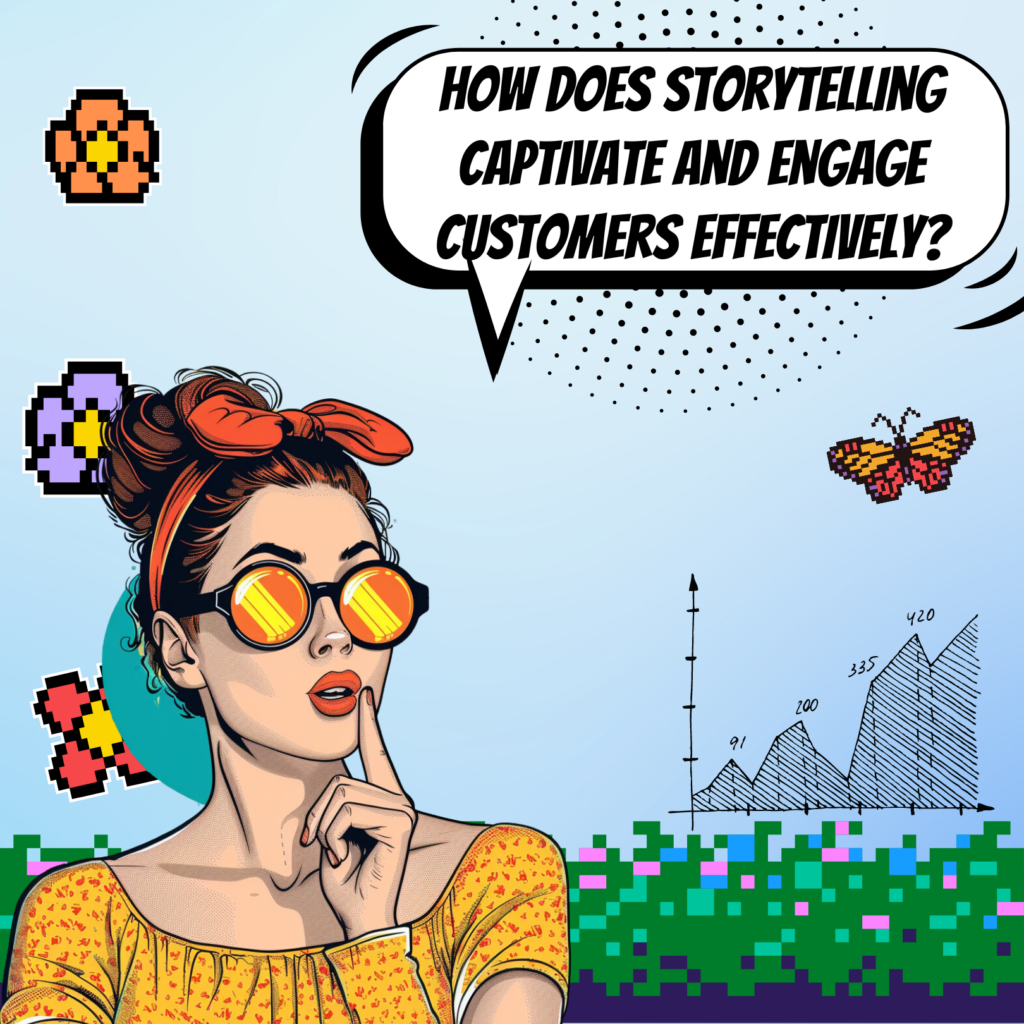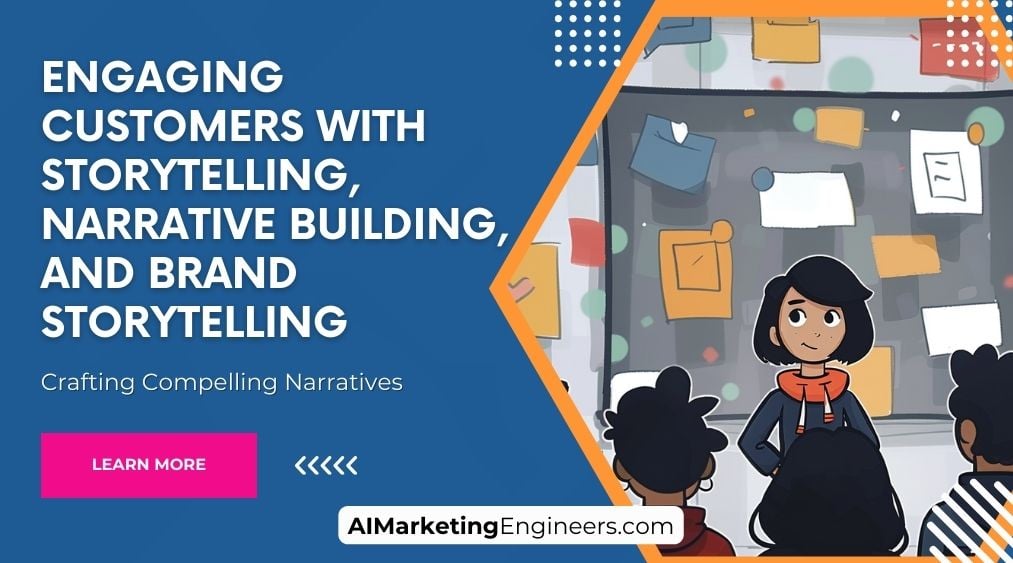Key Takeaways
✅ Emotional Connection: Did you know that messages delivered as stories can be up to 22 times more memorable than just facts? Engaging customers with compelling brand storytelling generates an emotional resonance, making your business not just a provider but a presence in their lives. Foster this connection by sharing relatable stories that place the customer at the heart of your narrative and watch brand loyalty grow.
✅ Consistency and Authenticity: A whopping 86% of consumers say authenticity matters when deciding what brands they like and support. Maintaining a consistent and authentic brand story across all platforms ensures that customers receive a uniform message, one that's as real as it is reliable. Integrate genuine narratives that embody your brand's core values to see a real difference in how customers interact with and remember your brand.
✅ Customer-Centric Approach: Putting the customer first isn't just good manners – it's smart business. A customer-centric narrative, built from real data and insights, can increase your customer retention rates by 5% and profits by up to 95%. Transform your customers into protagonists of your brand story and create experiences that not only resonate but also reinforce their loyalty and engagement.

Introduction
Have you ever wondered why some brands seem to have a magnetic pull? The secret isn't just in the quality of their products—it's in the stories they tell. Engaging Customers with Storytelling, Narrative Building, and Brand Storytelling is more than just marketing; it's an art form that can indelibly etch a brand into the consciousness of consumers.
In this piece, we peel back the layers of traditional marketing to showcase how a well-told story does more than sell—it inspires, connects, and stays with the audience long after the tale is told. Through innovative strategies and effective narrative-building techniques, learn how to boost not just revenue, but also build a more substantial return on investment (ROI) and return on ad spend (ROAS) by making meaningful connections with your audience.
Teased with the promise of actionable insights, by the end of this article you'll be equipped with groundbreaking information to harness the transformative power of storytelling in your marketing efforts. Whether you're looking to refine your brand's story or revolutionizing your engagement approach, the guidance herein is your first step into a larger, emotionally connected world with your customers.
Top Statistics
| Statistic | Insight |
|---|---|
| Data-driven storytelling can boost audience engagement by up to 300%. | This massive increase in engagement demonstrates the compelling power of stories in capturing the attention and interest of audiences. |
| Stories are 22 times more memorable than facts alone. | Making information part of a story greatly improves its memorability, enhancing the impact and retention of the brand message. |
| By 2025, it is projected that 75% of data stories will be automatically generated. | This reflects a growing trend towards leveraging technology in crafting compelling narratives at scale. |
| 93% agree that data storytelling drives revenue-increasing decisions. | The influence of a well-told story is not just on audience engagement but also directly correlates with positive financial outcomes for businesses. |
| If people love a brand story, 55% are more likely to buy the product in the future, 44% will share the story, and 15% will buy the product immediately. | A much-loved brand story not only drives immediate sales but also builds long-term customer loyalty and brand advocacy. |
The Power of Brand Storytelling
When we talk about brand storytelling, we're focusing on the way businesses share their journey, values, and missions in a narrative that resonates with consumers. It's not just sharing what your company does, but telling the tale of why you do it and who benefits. So why does it matter? A well-crafted story conveys the essence of a brand far beyond a list of products or services, and it can deeply influence customer loyalty and perception.
Establishing an Emotional Connection
At its core, brand storytelling is about forging a deep, emotive link with your audience. Emotions guide decision-making, and when a customer feels connected to a brand's narrative, this bond can translate into commercial success. Consider the iconic 'Think Different' campaign by Apple. It didn't just sell computers; it sold ingenuity and rebellion against the status quo, leading customers to feel part of something bigger. When customers see their own values and experiences reflected in a brand's story, that's marketing gold.
Using Data to Support the Narrative
Data might not seem like the most enthralling component of storytelling, but it can be the backbone of an authentic narrative. Remember, stories backed by facts appeal to both the heart and the mind. Take Spotify's year-end 'Wrapped' campaign—it uses users' listening data to create a personalized story of their year in music. This clever blend of data with a personalized narrative makes for compelling and shareable content, showing a deep understanding of the listener's unique experience.
Make it Resolute
The secret sauce to making brand stories stick is relatability and simplicity. A good story is easy to remember and share, much like the adventurous traveler depicted in Red Bull's content or Nike's inspirational tales of athletic triumph. These brands excel at creating messages that don't just catch our attention for a moment but linger in our memory, often becoming a part of our conversations.
Tips for Effective Brand Storytelling
To master the art of brand storytelling, start by really knowing your audience. What thrills them? What concerns them? Then, expose the human element of your brand. Consider using real-life customer stories or behind-the-scenes looks at your company culture. Lastly, don't shy away from developing brand characters or mascots that give a face and personality to your business, making it even easier for customers to connect and engage with your brand on a personal level.
By weaving these elements together, businesses can create strong, enduring relationships with their audience—ensuring that when the customer is ready to make a purchase, your brand is at the forefront of their minds.
AI Marketing Engineers Recommendation
Recommendation 1: Engaging Customers with Storytelling Narrative Building: Leverage user-generated content to create a relatable storytelling narrative. Data from a 2021 survey by Tint revealed that 92% of consumers trust user-generated content more than traditional advertising. Encourage your customers to share stories of their experiences with your brand, and feature those stories across your platforms. This approach not only validates customer experience but also fosters a community around your brand.
Recommendation 2: Brand Storytelling: Integrate social issues into your brand story, aligning with current movements that resonate with your audience. A study by Sprout Social suggests that when brands take a stand on social issues, 70% of consumers say it makes them more likely to purchase from that brand. Identify causes that are authentic to your brand’s values and weave them into your narrative to connect on a deeper level with your customers.
Recommendation 3: Engaging Customers with Storytelling Narrative Building: Utilize immersive storytelling through technologies like augmented reality (AR) and virtual reality (VR). According to the International Data Corporation, spending on AR/VR is projected to reach $72.8 billion by 2024. This presents a novel way to captivate your audience with an interactive brand experience. For example, a virtual tour of your production process or an AR-enabled view of how your product fits into the customer's life can create memorable engagements that drive brand loyalty.
Relevant Links
- China's Short-Video Fever: Capturing the Buzz with Douyin and Kuaishou
- Dominate German Search: Mastering Google.de SEO Like a Pro
- Making Waves in Japanese Social Media Marketing
- Maximizing Your Impact on Russia's Major Online Retail Platforms
Conclusion
In wrapping up our exploration of engaging customers with storytelling, narrative building, and brand storytelling, we come away with the fundamental understanding that the heart of marketing is no longer about just pushing a product—it's about telling a story that resonates on a personal level. At its core, brand storytelling isn't just a tactic; it's an enduring connection forged between the brand and its audience. Remember, it's through the power of stories that we establish an emotional connection, turning a one-time buyer into a lifelong advocate.
Harnessing data-supported narratives can significantly amplify this connection, transforming cold statistics into compelling chapter points of your brand's ongoing tale. But how can we make sure these stories not only reach but also stick with our audience? By focusing on relatability and ensuring our stories are memorable, we imbue our messages with living qualities that persist in the minds of our customers.
As we sign off, ask yourself: How will you wield the influential tool of storytelling to capture the hearts of your audience? Will you be the brand that simply communicates, or the one remembered for cultivating a rich, character-driven landscape in which your customers play a starring role? The story, after all, is yours to tell—and the next chapter begins with you.
FAQs
Question 1: What is brand storytelling?
Answer: Brand storytelling is the strategic use of narratives to convey a brand's core values, identity, and purpose to its target audience. It aims to establish emotional connections and engage consumers on a deeper level, fostering brand loyalty and driving awareness, engagement, and sales.
Question 2: Why do you need a brand story?
Answer: A brand story connects you to your target consumers, supports social media marketing efforts, and inspires customers to take action. It helps create an emotional connection, builds brand loyalty, and sets your brand apart from competitors.
Question 3: What are the benefits of having a brand story?
Answer: Effective brand storytelling evokes an emotional connection, ignites action, and creates a memorable impact on consumers. It helps build brand awareness, keeps attention on marketing channels, and establishes trust.
Question 4: How do you create a strong brand story?
Answer: Start with your customer, use narrative techniques, have a clear purpose, and lean into authenticity. Define your target audience, use buyer personas or archetypes, and craft a compelling storyline that resonates with your audience.
Question 5: What role does data play in brand storytelling?
Answer: Data from trustworthy sources helps drive home a brand's message and story. It can be used to support the narrative, provide personal stories, and showcase growth or consumer interactions.
Question 6: How do you make a brand story resonate?
Answer: The ultimate goal is to create a memorable story that resonates with consumers. Use emotional connections, create experiences, and convey empathy. Make sure the story is authentic, relatable, and meaningful to your audience.
Question 7: How do you use brand storytelling in marketing?
Answer: Incorporate brand storytelling into various marketing channels such as social media content, advertisements, blog posts, and video campaigns. Use multimedia formats, encourage brand advocacy, and leverage content marketing to share your story effectively.
Question 8: What is the importance of authenticity in brand storytelling?
Answer: Authenticity is paramount in brand storytelling. Be genuine, transparent, and honest in your narratives to reflect the true essence of your brand and build trust with your audience.
Question 9: How do you engage your audience through brand storytelling?
Answer: Engage your audience by inviting them to participate, share their own experiences, and become part of the brand's journey. Use visual storytelling, create immersive experiences, and encourage brand advocacy to drive positive change in society.
Academic References
- Woodside, A. G., Sood, S., & Miller, K. E. (2008). When Consumers and Brands Talk: Storytelling Theory and Research in Psychology and Marketing. Psychology & Marketing, 25(2), 97-145. This paper explores the intersection of consumer psychology and marketing, focusing on how storytelling can be a dialogue between brands and consumers. It offers empirical evidence supporting the efficacy of storytelling in marketing and how it influences consumer behavior and brand perception.
- Escalas, J. E. (2004). Narrative Processing: Building Consumer Connections to Brands. Journal of Consumer Psychology, 14(1-2), 168-180. Escalas discusses the cognitive mechanisms behind narrative processing and how consumers integrate brand stories into their self-concepts. This seminal work underlines the concept of narrative transportation and its role in creating strong emotional connections with brands.
- Lundqvist, A., Liljander, V., Gummerus, J., & Van Riel, A. (2013). The Impact of Storytelling on the Consumer Brand Experience: The Case of a Firm-Originated Story. Journal of Brand Management, 20(4), 283-297. Highlighting the significance of firm-originated stories, this research presents a case study that illustrates how narrative storytelling can enhance the consumer's brand experience, leading to higher degrees of brand trust and loyalty.
- Gensler, S., Völckner, F., Liu-Thompkins, Y., & Wiertz, C. (2013). Managing Brands in the Social Media Environment. Journal of Interactive Marketing, 27(4), 242-256. This article provides insights into managing brand storytelling in the rapidly changing and dynamic context of social media. It showcases the importance of co-creation of narratives with consumers and its implications for brand management.












